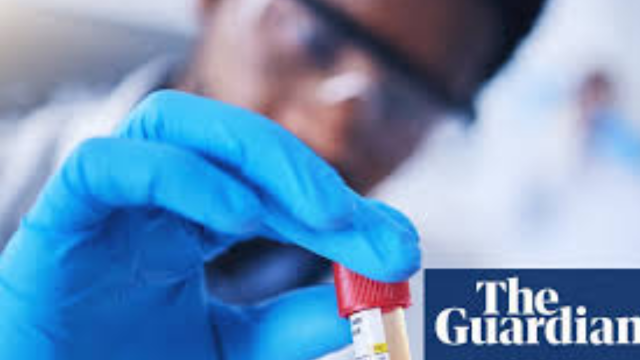November 20, 2025 : A groundbreaking new study suggests that a simple pinprick blood test could detect signs of multiple major diseases up to a decade before any symptoms appear, ushering in a potential revolution in preventative medicine. The large-scale research, involving the UK Biobank, measured nearly 250 different blood compounds — including proteins, sugars, fats, and metabolites — to map detailed metabolic profiles linked to future disease risk.
The Science Behind the Breakthrough
Scientists from prestigious institutions like the University of Edinburgh, King’s College London, and the University of Oxford collaborated on the project. Using the massive dataset from UK Biobank — which includes half a million volunteers — they combined molecular data from capillary (finger-prick) blood samples with long-term health records to identify “signatures” that correlate strongly with future disease onset.
According to the researchers, these metabolic signatures reflect not just a person’s genetics, but also the effects of lifestyle and environment — factors such as diet, stress, pollution, and exercise. This makes the test more powerful and dynamic, allowing a real-time glimpse into how these factors could be shaping someone’s long-term health.
What Diseases Could Be Predicted?
The potential list is broad and includes heart disease, cancer, diabetes, and neurodegenerative disorders like dementia. By detecting risk long before symptoms appear, doctors could intervene earlier — potentially with lifestyle changes, more frequent monitoring, or preventive treatments.
Why a Pinprick Test Matters
Traditional blood tests often require a full venous draw (needle in the arm), which can be costly, time-consuming, and inconvenient, particularly for mass screening. But capillary blood collected via a pinprick — similar to what’s used for glucose monitoring — can be done quickly, with minimal discomfort, and potentially at home.
Because the new test only requires a tiny drop of blood, scaling it for large populations (in clinics or even via mail-in kits) becomes feasible.
Implications for Preventive Healthcare
Researchers argue this could be a paradigm shift in how medicine works: moving from reactive treatment (waiting for symptoms) to precision prevention. Instead of waiting for disease to manifest, doctors could offer personalized risk assessments and interventions based on molecular data.
For example, if a person’s metabolic profile indicates a high risk for diabetes or cardiovascular disease, they might receive targeted advice on diet, exercise, or early medication — all before the disease crosses a clinical threshold.
Challenges and Caveats
However, the study’s authors do flag several important challenges:
- Validation in Diverse Populations: The models were built using the UK Biobank dataset. Researchers say the test needs to be validated in other populations — with different ethnicities, environments, and healthcare systems — before it becomes a standard clinical tool.
- False Positives/Negatives: Any predictive test has the risk of wrongly flagging healthy people as “at risk” (causing anxiety) or missing those who will develop disease.
- Sample Collection and Standardization: While using capillary blood is convenient, factors like how samples are collected, stored, and analyzed will need strict standardization.
- Clinical Guidelines: Before this test can be widely used, medical professionals need clear protocols on how to act on its results — for example, what interventions should follow a high-risk reading.
Broader Context: Other Early Detection Advances
This development is part of a growing wave of research into early disease detection. For instance:
- A blood test called HPV-DeepSeek has shown promise in detecting HPV-associated head and neck cancers up to 10 years before clinical diagnosis by spotting viral DNA in the bloodstream.
- Researchers have also developed a protein-based blood test for ALS (amyotrophic lateral sclerosis) that detects disease markers up to 10 years before symptoms, with over 98% accuracy.
These developments collectively suggest a future where a few drops of blood could give powerful insights into a person’s health trajectory — long before disease takes hold.
Looking Ahead: What’s Next
The research teams are planning further studies to validate their metabolic risk-prediction models across more diverse populations. Clinical trials may soon test whether early interventions based on these predictions can actually prevent or delay disease onset.
If successful, this pinprick blood test could become part of routine health checkups, especially for middle-aged and older adults. Over time, it may also help recalibrate how healthcare systems operate: shifting more focus and resources to prevention rather than cure.
Conclusion
A simple drop of blood — collected via a pinprick — could soon offer a window into your future health, potentially flagging the risk of major diseases 10 years before symptoms emerge. While the test is not yet ready for clinical use, the science points to a future where predictive medicine becomes a reality — one where early action, not just early diagnosis, could save lives.
Summary
A new UK-based study shows a simple pinprick blood test can detect metabolic “signatures” linked to major diseases like cancer, heart illness, and dementia up to 10


